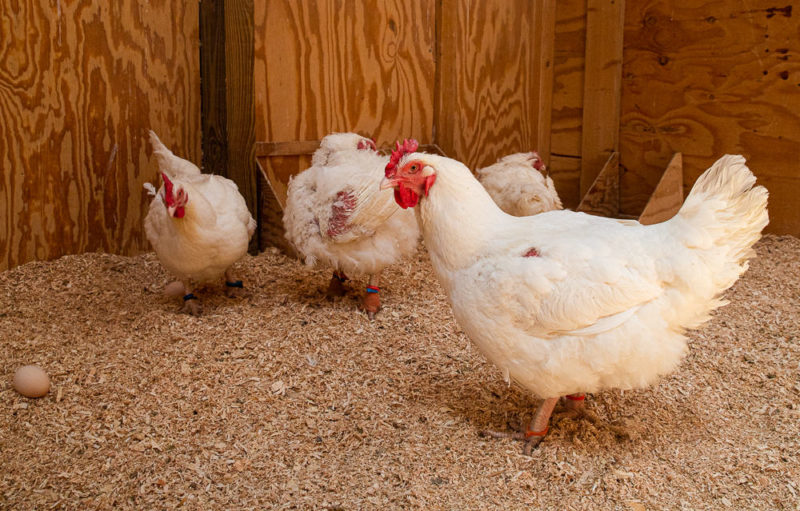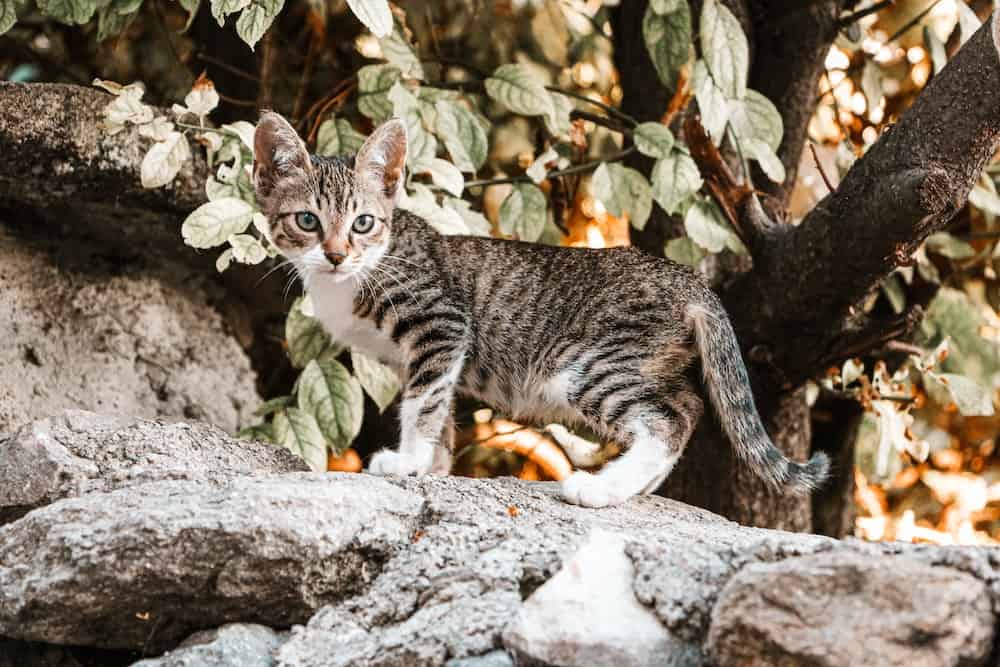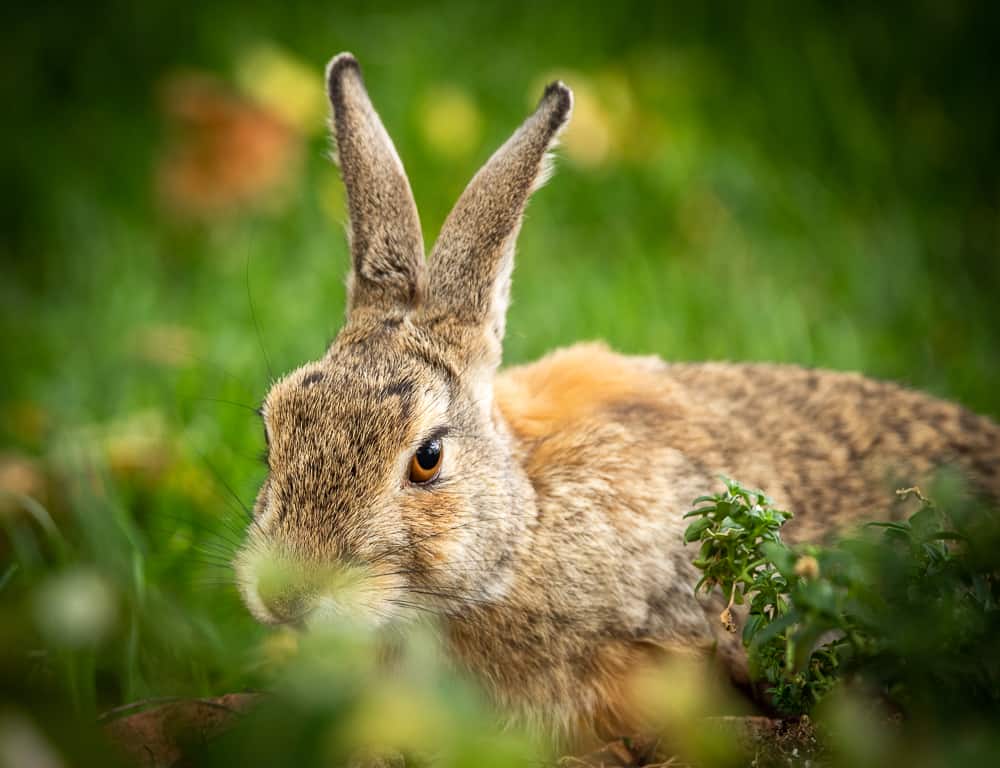
There are many animal sanctuaries in the world, each caring for residents of a diverse mix of animal species. At a farmed animal sanctuaryAn animal sanctuary that primarily cares for rescued animals that were farmed by humans., staff typically provide care for domestic animal residents. However, it isn’t uncommon for a farmed animalA species or specific breed of animal that is raised by humans for the use of their bodies or what comes from their bodies. sanctuary to take in a wild relative of their domestic residents. This will certainly impact the care plans the sanctuary has in place for this new individual; In fact, some care plans need to be adjusted quite dramatically to suit the unique needs of domestic, feral, and truly wild species!
Conversely, there are a number of animal sanctuaries that participate in wildlife rehabilitation or sanctuary as their primary missionThe stated goals and activities of an organization. An animal sanctuary’s mission is commonly focused on objectives such as animal rescue and public advocacy., but who also take in domestic counterparts of the species they specialize in from time to time.
This resource provides a brief overview of the definitions of what it means for an animal to be domestic, feral, or wild, and includes some care examples for some species that fall under these classifications. We hope it will help clarify a few points and offer a few considerations when caring for various species groupings.
Keeping It In Perspective
Regardless of how an animal may be classified, it’s important to always keep in mind that animals are individuals whose needs should always be centered when it comes to providing them with appropriate and compassionate care!
What’s In A Word?
If you operate a farmed animal sanctuary, the majority (if not all) of the residents you care for are likely domestic. Other sanctuaries may care for mostly wildlife and offer sanctuary to the occasional domestic animal in need. In terms of their care needs, a turkeyUnless explicitly mentioned, we are referring to domesticated turkey breeds, not wild turkeys, who may have unique needs not covered by this resource. is a turkey is a turkey, right? Not so! The domestication process has greatly affected a number of traits that makes domesticatedAdapted over time (as by selective breeding) from a wild or natural state to life in close association with and to the benefit of humans turkeysUnless explicitly mentioned, we are referring to domesticated turkey breeds, not wild turkeys, who may have unique needs not covered by this resource. different from wild turkeys and has implications for their care. This is true of other species as well, some more so than others.
The following questions show the complexity of how those terms can be applied. See how you would respond to each of these questions before reading the answer!
Now that we’ve made an easy topic complicated, let’s look at the actual definition of each term!
Domesticated Animals

According to the Merriam-Webster Dictionary, domestication is defined as “The adaptation of a plant or animal from a wild or natural state (as by selective breeding) to life in close association with humans”
And domestic is defined as “ a: Living near or about human habitations” and “b: Tame, domesticated.”
The takeaway is that if a species is considered domesticated, this is due to human intervention over many generations, typically to suit the desires of humans. Most farmed animalsA species or specific breed of animal that is raised by humans for the use of their bodies or what comes from their bodies. are domesticated, as well as species like domesticated dogs and cats.
Feral Animals

In the Oxford English Dictionary, feral is defined as “(Especially of an animal) in a wild state, especially after escape from captivity or domestication.”
While many of us use the term “wild” to refer to feral animals, generally speaking, the term “feral” more accurately describes domesticated animals that have escaped domestication. A feral animal may be an individual domesticated animal who is no longer in a domesticated environment, or one of their descendants. Feral domesticated cats are a common example you might see around the world.
Wild Animals

The Oxford English Dictionary defines wild as “(Of an animal or plant) living or growing in the natural environment; not domesticated or cultivated.”
Generally, an animal is only considered wild if humans have played no role in changing their species to suit human desires. Wild animals are as varied as the natural world, ranging from lions and tigers to Canada geeseUnless explicitly mentioned, we are referring to domesticated goose breeds, not wild geese, who may have unique needs not covered by this resource. to tiny dik-diks!
Considerations For Sanctuaries
Legality Of Caring For Wild Animals
There are some legal issues you might consider before agreeing to provide sanctuary for a wild animal:
- In many regions, certain or all wildlife species are illegal to take in unless you have a wildlife rehabilitator license. It may be illegal to take in certain wildlife species even if you have a license. Check with local ordinances to see if you require a specialized license or permits before committing to the care of a wild animal. Without those, you’ll need to consider the risk of legal complications.
- Depending on the species you are caring for, you will need to ensure you have the proper living spaces and safety measures in place to protect the individual and to also protect other human and nonhuman animal lives. Not only can neglecting to do this cause harm to the individual resident and other residents, it can also place your sanctuary in legal danger if the resident escapes and hurts someone.
Differences In Care
- If you are caring for a wild animal, it is important to ascertain whether there is potential for that individual to return to the wild. This can depend on their state of health, presence of injuries, available habitats, and their history with humans. The answer to this question strongly impacts the type of care they may need. An individual who is a good candidate for release must be cared for differently than how you’d care for domesticated residents. If releasing an individual, you will need to limit human interactions and care for them in a way that encourages natural behaviors that might not be in the domesticated residents’ repertoire.
- By contrast, if you are caring for a feral individual, care must be taken to slowly develop a good relationship between the individual, staff, and other residents, as opposed to limiting interactions. A feral individual may need entirely different care routines. You might have to rethink the set up of a living spaceThe indoor or outdoor area where an animal resident lives, eats, and rests., the entrances, the timing of cleaning, and the safety of staff while the individual adjusts to their new environment. You might also find that the individual will never seek out much human interaction, so the goal will be to simply ensure they feel comfortable in their surroundings. This may also affect your ability to quickly transport or provide veterinary care to the individual.
Cohabitation Considerations
- While domesticated animals and their wild counterparts may share a number of similarities, cohabitation is often not the best option for many species. There are disease considerations, temperament considerations, size, and behavioral differences that will need to be considered. Feral individuals may be able to comfortably live with other domesticated residents, but each case should be considered independently as every individual is different. There are feral species that may be ancestrally feral as opposed to a domesticated individual that has been separated from human contact for some time, which would impact whether they’d be a good cohabitation candidate.
We hope this resource provides you with useful information for your sanctuary to consider should this situation arise. It can be a good idea to discuss these issues with your board and staff members if your sanctuary wishes to have policies in place regarding the care of wild species. Many sanctuaries are contacted to help or take in wildlife in need. Will this be part of your mission, or will you adhere to a more focused provision of sanctuary? There is no wrong answer, just the best answer for your sanctuary!
SOURCES:








